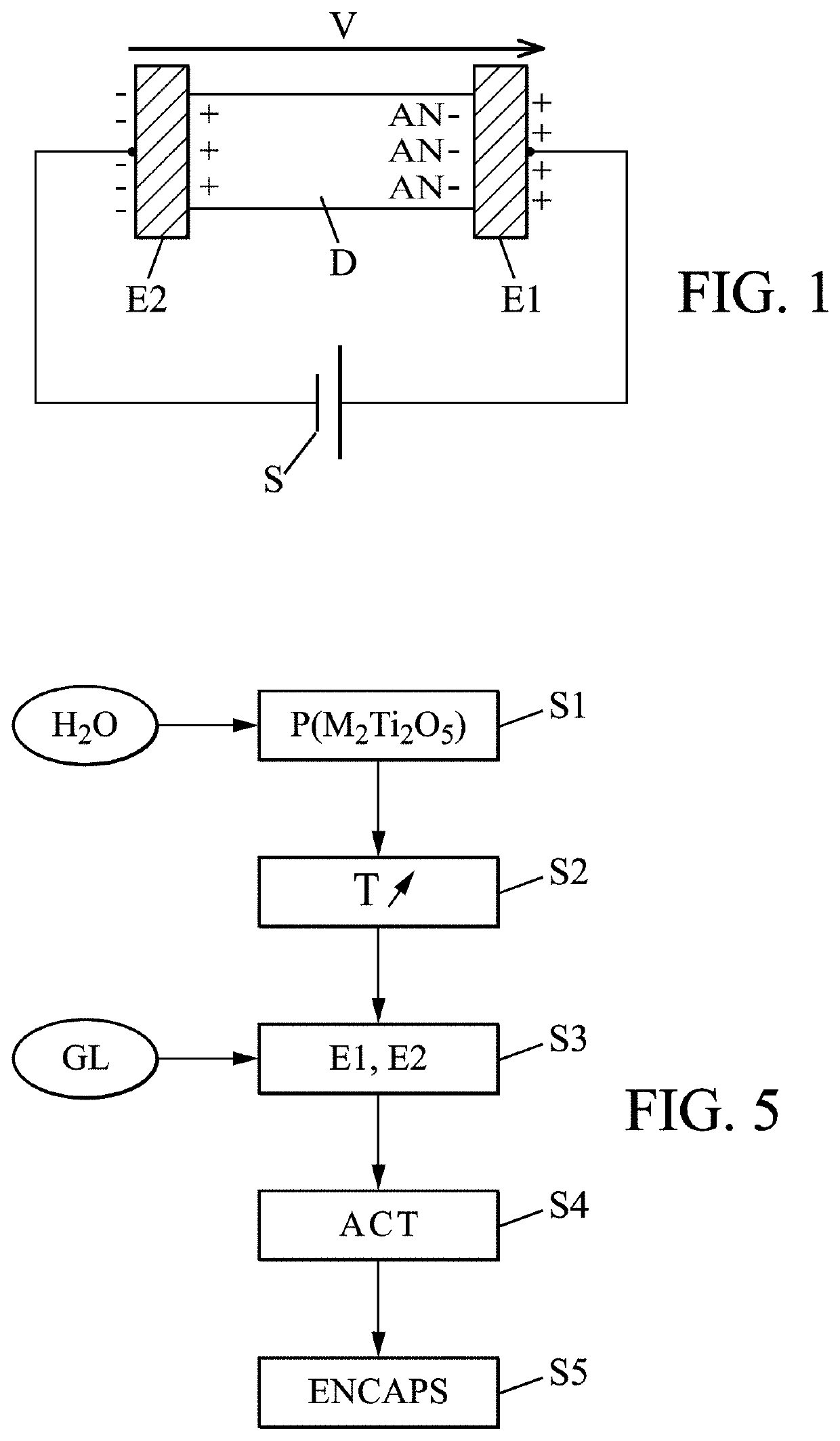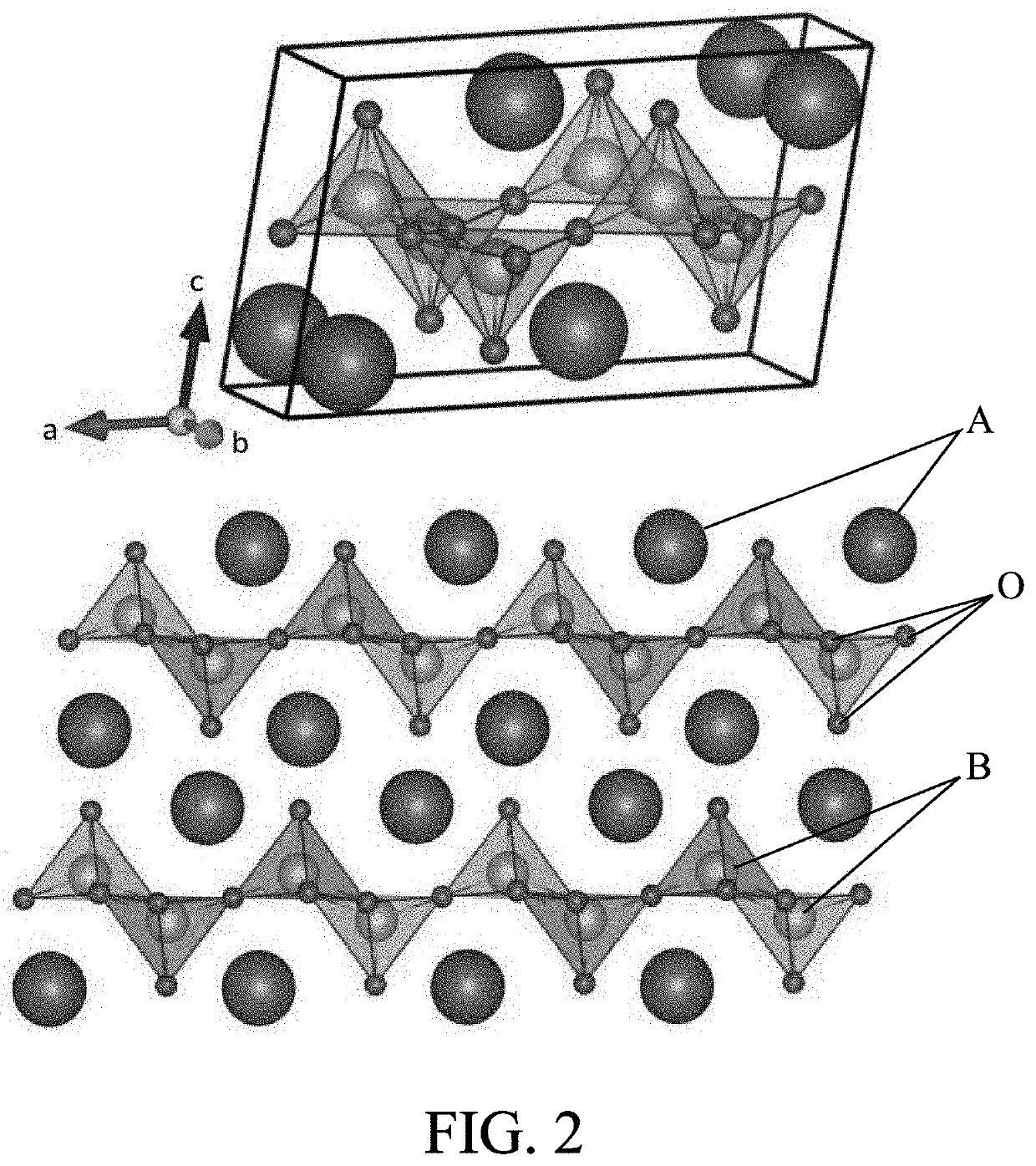Supercapacitor with electrolyte
a supercapacitor and electrolyte technology, applied in the direction of hybrid/edl capacitor protection/adjusting, instruments, hybrid/edl manufacture, etc., can solve the problem of remaining limited by the total amount of charges, and achieve the effect of multiplying the charges stored and ensuring safety
- Summary
- Abstract
- Description
- Claims
- Application Information
AI Technical Summary
Benefits of technology
Problems solved by technology
Method used
Image
Examples
first embodiment
[0096]In a first embodiment, the temperature is raised locally in the material by several tens of degrees (for example up to 60° C.). The spontaneous current is then seen to cease, as shown in FIG. 6. The current is restored spontaneously when the temperature returns to room temperature, without requiring any other charge process. The local increase in temperature may be produced by various means, for example by laser, radiofrequency, or resistive heating, or by Peltier module.
second embodiment
[0097]In a second embodiment, alternatively or in combination, it is possible to vary appropriately the pressure load on the material in order to “lock” any discharge and maintain the charge in the electrolyte, by applying a mechanical force. Then, the application of a different force (for example a “null” force with release of the pressure) allows releasing the charge from the electrolyte and thus retrieving the current that was stored therein. The mechanical force may be applied by mechanical, piezoelectric, electrostrictive, magnetostrictive, or magneto-mechanical systems for example.
[0098]Supercapacitors based on a solid ion-conductive material, particularly of the M2Ti3O5 type, have charge storage densities that exceed the performance of existing supercapacitor devices because of the very high dielectric constant and therefore the very strong polarization induced in the material (typically 0.1 C / cm2), for a low electron conduction.
[0099]Unless the charges of the electrolyte mat...
PUM
| Property | Measurement | Unit |
|---|---|---|
| temperature | aaaaa | aaaaa |
| dielectric constants | aaaaa | aaaaa |
| size | aaaaa | aaaaa |
Abstract
Description
Claims
Application Information
 Login to View More
Login to View More - R&D
- Intellectual Property
- Life Sciences
- Materials
- Tech Scout
- Unparalleled Data Quality
- Higher Quality Content
- 60% Fewer Hallucinations
Browse by: Latest US Patents, China's latest patents, Technical Efficacy Thesaurus, Application Domain, Technology Topic, Popular Technical Reports.
© 2025 PatSnap. All rights reserved.Legal|Privacy policy|Modern Slavery Act Transparency Statement|Sitemap|About US| Contact US: help@patsnap.com



